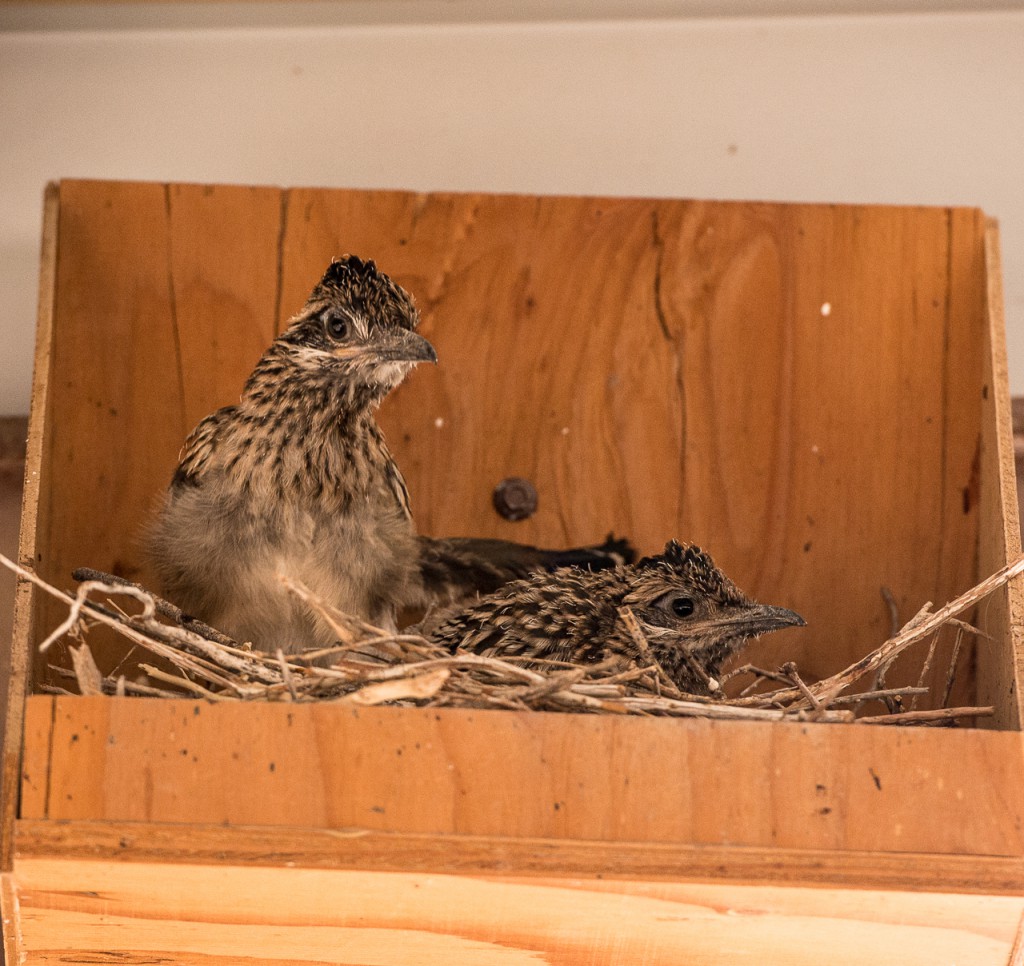 Photo ©
Anneke Moore
Photo ©
Anneke Moore
Luck Be A Roadrunner
Anneke Moore and her husband Dan have lived in close proximity to roadrunners for about 10 years. Perhaps it was destined that her home would provide shelter for the birds, as the house wasn’t even finished before the roadrunners were checking it out. Anneke told us, “While we were building our house, a roadrunner was already living nearby and came into the house before it was finished. The local workmen here told us this was a sign of good luck.” According to indigenous folklore, one of these birds living near a home brings the residents good fortune.
The southwestern landscape was very different from the lush Pacific Northwest region from which Anneke and Dan had retired 10 years ago. Anneke recalls, “I heard the coo-coo sound from the roadrunner regularly, but did not know where the nest was, or initially, even who made that sound.”
For six years, a bold roadrunner had roosted around their home, first in a nook above their trash cans, then in the horse barn. So Dan made a roosting shelf in the barn, never thinking that it would soon become a “nest shelf.” The roadrunners proved to be industrious nesters, first repurposing a used Curve-billed Thrasher nest, then building another nest in a butterfly bush. More recently, the operation was moved to the roosting shelf in the horse barn, where two broods were raised. The latest brood (pictured) is thought by Anneke to be that of a younger pair. They raised two young.
Roadrunners typically nest in shrubs or cacti, but Anneke’s photos capture a potentially novel situation. Roadrunners can be tolerant of nesting near humans, even as close as your patio table, but can they learn to nest on artificial structures specifically provided for that purpose? Is nesting close to our buildings another way that these clever birds might outwit the wily coyote, or did Anneke and Dan just get lucky? If you want to make your own luck, try putting up a shelf in good roadrunner habitat and tell us what happens!
 Photo ©
Photo ©